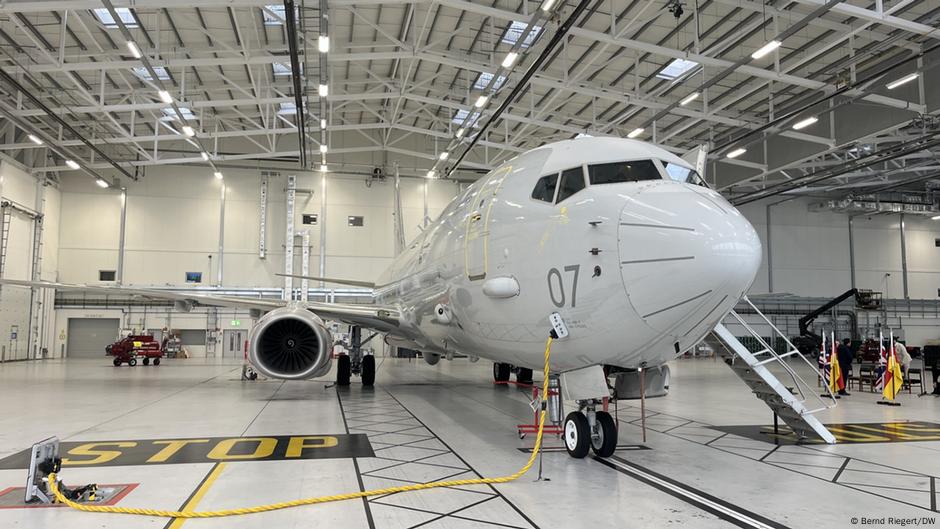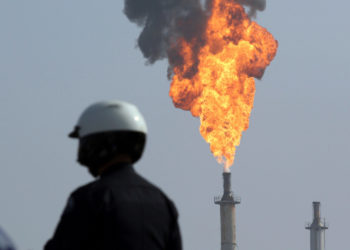The reconnaissance flight took off from Lossiemouth, northeast Scotland, and headed out over the north Atlantic Ocean.
Aboard the Royal British Air Force plane, which to all intents and purposes looked like a large grey Boeing 737 but with fewer windows, was German Defense Minister Boris Pistorius. From the plane, he could see how Russian submarines and suspicious ships could be detected using highly sensitive radar and sonar equipment.
“We went down quite low, around 300 meters, and could see the ships rocking on the waves,” Pistorius told DW after the two-hour flight with a German pilot in the cockpit.
The Boeing P-8 Poseidon — a military plane that uses the frame of the passenger plane, the Boeing 737 — is primarily designed to detect , which often depart from the Russian port of Murmansk to the north Atlantic.
During the flight, no submarines were seen but the German politician was able to observe sonar buoys — also called sonobuoys — being dropped from the rear of the plane. The buoys are equipped with acoustic sensors and when dropped, can form a network of listening devices that can detect a ship’s engine noise from kilometers away, as well as eavesdrop on other aspects of the underwater environment.
‘Ensuring our armed forces can operate side by side’
The German Navy is going to get eight of these airborne reconnaissance and surveillance systems. The British Royal Air Force, the Norwegian Navy and the US Navy already have them. All together, these NATO countries plan to monitor the north Atlantic and the Baltic Sea from air bases in Lossiemouth, Keflavik in Iceland and Nordholz in Germany.
Also on board was British Defense Secretary John Healey and after the flight, it was announced that the two countries’ militaries would join together in monitoring Russian submarines from out of the British base at Lossiemouth.
“Together we’re strengthening NATO, boosting our cyber defenses, and ensuring our armed forces can operate side by side with ease — from patrolling the skies over Scotland to hunting Russian subs in the north Atlantic,” Healey said in a statement after the flight. “This partnership is a cornerstone of European security.”
According to NATO officers, movements of , some of which are nuclear-powered and armed, have increased significantly in recent years. “This is a strategic threat,” said one officer who wished to remain anonymous. Submarines are permitted to dive in international waters during peacetime but since they do not have transponders on board, their locations are difficult to determine.
For this reason, NATO has set up a network of surveillance systems, the backbone of which are reconnaissance aircraft. The main aim is to work out just how close Russian subs are to NATO countries’ coasts and whether they’re crossing maritime boundaries.
The P-8 aircraft can also fire British-designed torpedoes if necessary, so could be used against submarines in times of war.
Europe’s message to Trump, Putin
Russia operates similar but less modern systems for detecting submarines in the north Atlantic and Baltic Sea. One officer describes it as a constant game of “cat and mouse.”
Currently American submarine-hunters are stationed in Iceland. For now, that is. that the US might eventually thin out their ranks and that European countries will need to take over the job.
“NATO must become more European to remain transatlantic,” was Pistorius’s refrain in Lossiemouth. “That is our message to both Donald Trump and Vladimir Putin, but [with the emphasis] in different directions.”
Trump must be made aware that the Europeans are taking on more responsibility for security and defense while Putin needs to know that NATO will always be able to find his ships.
After the flight, Pistorius also pointed out that this is not just about Russian submarines. that approach submarine cables or offshore wind farms will also be detected by the surveillance systems.
“It’s also about critical infrastructure, about detecting suspicious vessels,” he said. “I was able to see very impressively on board today how high the resolution and quality is. In that respect, this is not just a nice-to-have, it means greater security for our own country and the [NATO] alliance’s territory.”
Ongoing support for Ukraine
The two defense ministers also talked about the fact that Germany and the UK are expanding cooperation in the air force and in drone technology, as well as on equipment for ground forces. As part of a NATO initiative, they are jointly developing a long-range precision missile with a range of over 2,000 kilometers.
British Defense Minister Healey confirmed that both the UK and Germany intend to continue by training and supplying weapons. Both countries are members of the so-called Coalition of the Willing, a group of mostly European countries supporting Ukraine. Healey said that pledges worth 50 billion British pounds (€57 billion) had been made but that more was needed.
Pistorius also told journalists that he welcomed the newly announced set of sanctions against Russia . Even so, the German politician said he was still skeptical about the Trump administration’s sanctions; similar sanctions had been imposed in the past but nothing had happened.
“We’re not afraid,” Pistorius said. “It is urgently necessary that we increase our efforts, stand together and make clear that we are capable and willing to defend ourselves.”
The acquisition of Poseidon P-8 planes for the German Navy is only a small part of this. The German Ministry of Defense’s budget is expected to to €150 billion by 2029.
This story was translated from German.
The post How Germany plans to spot more Russian submarines — from the sky appeared first on Deutsche Welle.



